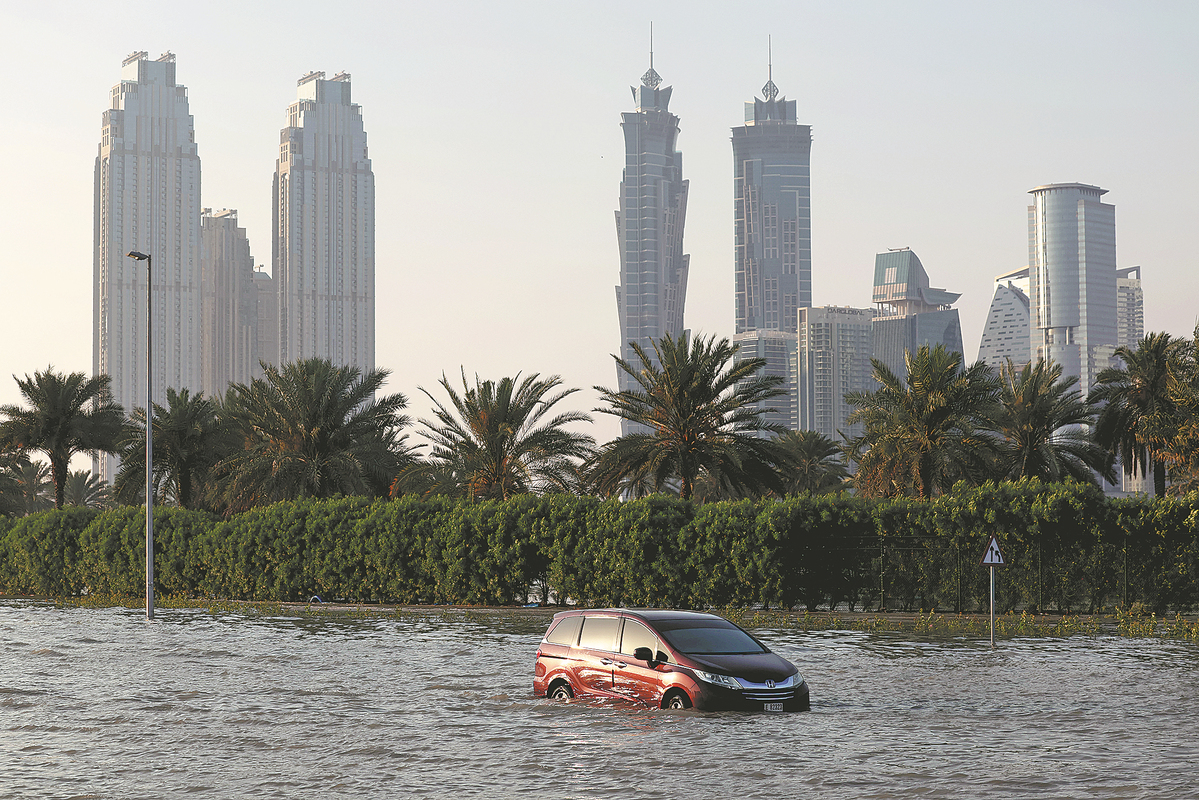
An abandoned vehicle is seen on a flooded highway after a rainstorm in Dubai on Wednesday. CHRISTOPHER PIKE/GETTY IMAGES
DUBAI — Emergency workers tried to clear waterlogged roads and people assessed the damage to homes and businesses on Thursday after a rare and epic rainstorm swamped the United Arab Emirates.
Dubai International Airport struggled to clear a backlog of flights and many roads were still flooded in the aftermath of Tuesday's deluge.
The rains were the heaviest experienced by the Gulf state in the 75 years that records have been kept, bringing much of the country to a standstill and causing significant damage.
The storm also hit neighboring Oman on Sunday, killing 20, Reuters reported, while in the UAE, one person has been killed by the storm.
Flooding trapped residents in traffic, offices and homes, and footage circulated on social media showed malls overrun with water pouring from roofs.
Traffic remained heavily disrupted and long lines formed at petrol stations, while some vehicles, including buses, were almost entirely submerged in water.
Emergency workers used a fire truck to pump clear a road flooded in near waist-deep water as drivers tried to pass, navigating around abandoned vehicles.
UAE President Sheikh Mohammed bin Zayed Al Nahyan said in a statement he had ordered authorities to assess the damage and provide support to affected families.
Rainfall is rare in the UAE and on the Arabian Peninsula, which is typically known for its dry desert climate. Summer air temperatures can soar above 50 C.
Following Tuesday's events, questions were raised whether cloud seeding, a process that the UAE frequently conducts, could have caused the deluge.
A UAE government agency that oversees cloud seeding — a process of manipulating clouds to increase rainfall — denied that any such operations took place before the storm.
Climate experts said global warming was the main culprit behind extreme weather.
Researchers anticipate that climate change will lead to heightened temperatures, increased humidity and a greater risk of flooding in parts of the Gulf region.
Agencies via Xinhua